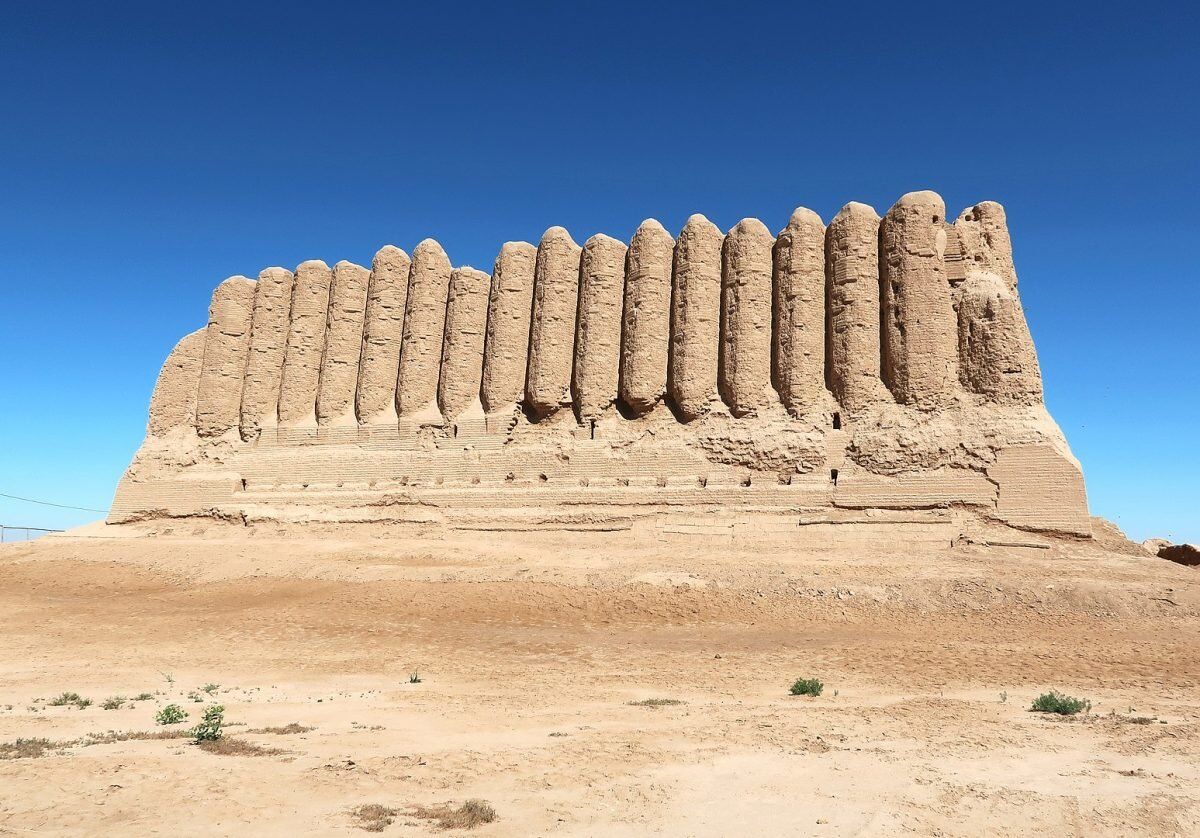Merv, also known by many names such as Alexandria, Antiochia in Margiana and Marv-i-Shahijan or “Merv the Great” was an ancient city located in present Turkmenistan.
Several cities have existed during different periods at Merv, with the earliest recorded occupation dating from around 3000 BC. At this time, only small villages existed in the region which was associated with the Bactria-Margiana Archaeological Complex, also known as the Oxus civilisation.
The first city period was founded around 500-600 BC, as part of the Achaemenid (First Persian Empire) expansion by Cyrus the Great. This Empire extended from the Balkans and Eastern Europe proper in the west to the Indus Valley in the East. The city is mentioned in ancient Persian texts as “Mouru” and was the regional seat of a satrap (regional governor).
For a brief period, Merv was named “Alexandria”, after Alexander the Great on an account of him supposedly visiting Merv, although there is no reliable evidence to support this. Alexander certainly campaigned to overthrow the Achaemenid Empire, but the change in name is most likely to commemorate his conquests, along with over 70 other cities named Alexandria during his campaign of Empire building.

Following Alexander’s death in 323 BC, the city was renamed to “Antiochia Margiana” and became the capital of the province of Margiana, a minor satrapy within the Achaemenid satrapy of Bactria and a province within its successors, the Seleucid and Parthian Empires.
The Sasanian Empire took control of Merv around AD 220-240 and maintained rule for almost four centuries. During this period, the city became a multi-faith centre for religious learning that included the official practice of Sassanid Zoroastrianism, Buddhism, Christianity, and Manichaeism.

Sassanian rule came to an end with the Arab conquest and the city became the capital of the Umayyad province of Khorasan. Using Merv as a base, the Arabs subjugated large parts of Central Asia and converted the former Persian speaking population to a Muslim majority.
Merv would become the centre of a rebellion against the Umayyad caliphate, when in AD 748 a new Abbasid dynasty was created. Throughout the Abbasid era (AD 750-1258), Merv was the capital and during AD 813 – 818, the home of the caliph al-Ma’mun making the city the temporary capital of the Muslim world.

In AD 1037, the Seljuks, a clan of Oghuz Turks took control of Merv and expanded the city, reaching a population of 500,000 inhabitants by AD 1210, making Merv one of the largest urban cities in the world.
Merv proved an attractive prize for the Mongols and in AD 1221, Tolui (son of Genghis Khan) is said to have slaughtered the inhabitants. Some historians number the death toll around one million, marking one of the bloodiest city conquests in recorded history and the decline in Merv for the centuries that followed.
In AD 1788 – 1789, the Mangghud (a Mongol tribe of the Urud-Manghud federation) destroyed the city and deported the remaining 100,000 inhabitants, the final chapter for Merv and its almost 2500 years of continuous occupation.
Archaeological Remains
Merv survives today as an eroded crumbling landscape of brick and clay in an archaeological park covering an area of 872 acres.
The urban centre comprises of a series of adjacent walled cities, each having been constructed from different periods.
Four notable cities are “Erkgala”, dating from the Archaemenid rule, “Gäwürgala” dating from the Hellenistic and Sassanian rule, “Soltangala” from the Abbasid and Seljuk rule and “Abdyllahangala” from the Timurid rule.
Throughout the wider landscape of the archaeological park are the remains of various buildings for domestic, industry and farming.
The most notable feature at Merv is the Erk Gala, a Persian style fortress that controlled the oasis on the Murghab River. This circular stronghold dates to the first city at Merv and later served as the acropolis for the Hellenistic city and later the Arc of the Islamic city.
Header Image Credit : John Pavelka





